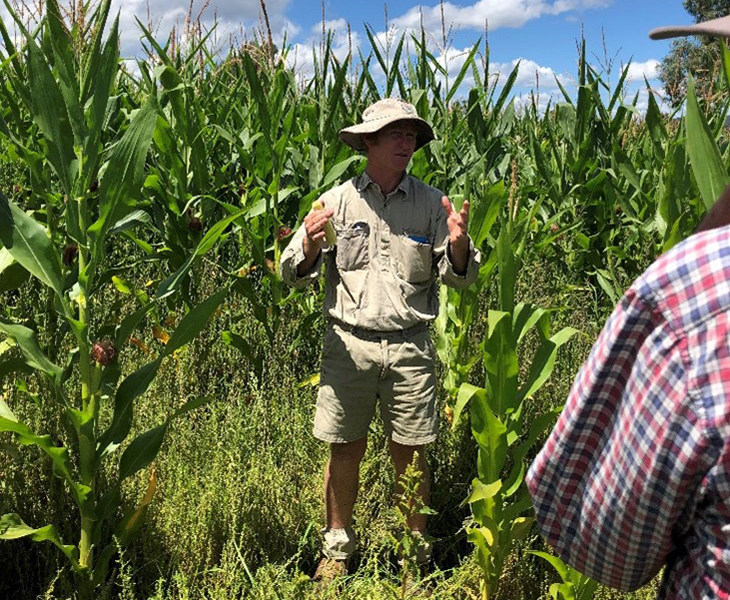Corn silage provides cost-effective fodder
23 August 2023

Following the drought that stretched across the NSW Northern Tablelands in 2018–2019, many producers in the region went on the hunt for cost-effective ways to replenish and improve pasture conditions.
John and Caroline Chappell, who were among those impacted by the drought at their Dundee property, found the answers when they hosted an MLA Producer Demonstration Site (PDS), run by Northern Tablelands Pastures Group.
In 2020, a 23ha paddock sown with lucerne and brassica on their property, ‘Bridgewater’, was chosen for the PDS, with plans to re-sow the area with lucerne.
However, the following spring, Chilean needle grass was discovered in the trial paddock, and the need to control it became just as important as replenishing fodder reserves.
“After seeking advice from an agronomist, we made the decision to sow corn for silage as it provides a range of options for chemical control of broadleaf weeds and grasses pre and post emergence -that would not have been possible if lucerne had been sown,” said John.
Harvesting rates
Prior to sowing, feedlot manure was spread across the paddock at a rate of 22t/ha and Glyphosate was sprayed twice.
After sowing in November, Dual Gold and Prime Extra Gold were applied for post-emergent weed control.
“Unfortunately, we saw 452mm of rainfall during the summer of 2021/2022 which made the weed control less effective,” John said.
“As a result, approximately 2ha of the paddock could not be harvested.”
Contractors harvested the corn in late April 2022 before delivering it to the on-farm silage pit, where it was rolled and inoculated.
This process:
- improves fermentation
- reduces the chances of major spoilage
- prevents nutritional loss
- keeps silage fresh for as long as possible in the pit
- significantly reduces secondary fermentation (heating) when the silage is fed out.
Yield
The Chappells harvested 900t of corn silage, which represented a wet yield of 39t/ha over the area sown.
Corn silage can yield up to 22 tonnes of dry matter per hectare (t DM/ha) at 40% moisture - this paddock yielded 15.6t DM/ha.
Following harvest, the paddock was sprayed with Glyphosate and direct drilled with annual ryegrass, brassica, and clover as a short-term fodder crop.
Feedbase potential
Although John and Caroline’s corn silage has not been feed tested, as a rule of thumb:
- corn silage normally provides 10MJ/kg DM of energy and 7.5% crude protein
- it also high in phosphorus and potassium which:
- builds bones
- metabolises fat, carbohydrates, and protein
- increases feed intake
- improves reproductive performance
The corn feed will be tested this winter period when more of their herd begin grazing on it.
|
Crunching the numbers on corn silage The total cost of silage delivered to the pit at ‘Bridgewater’ was $67/t wet and $168/t dry assuming 40% dry matter. Here’s a closer look at the economics of producing the corn silage.
* The process of preserving fodder |


